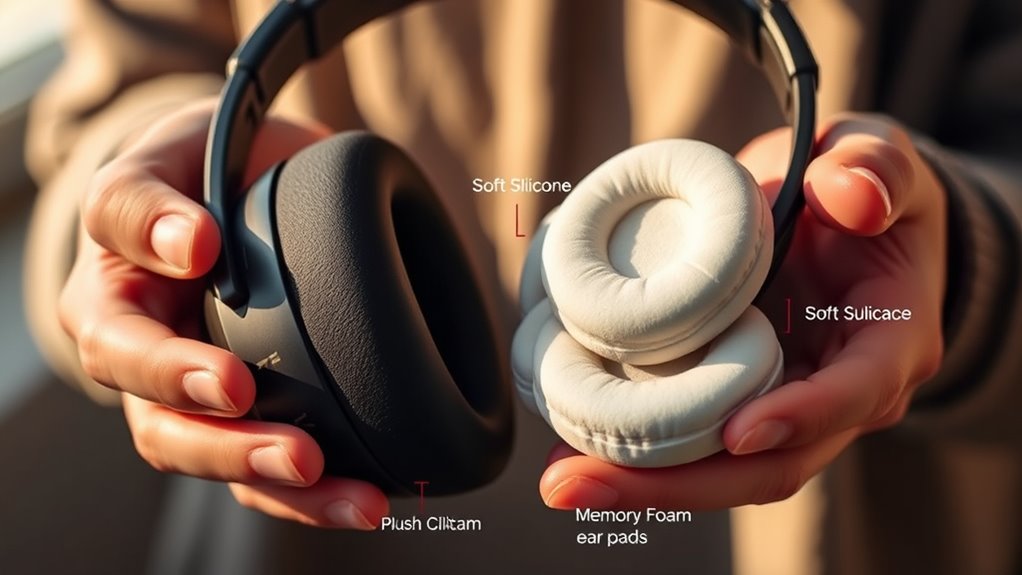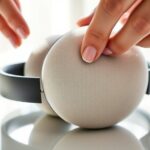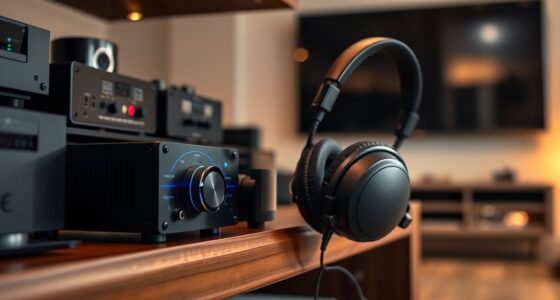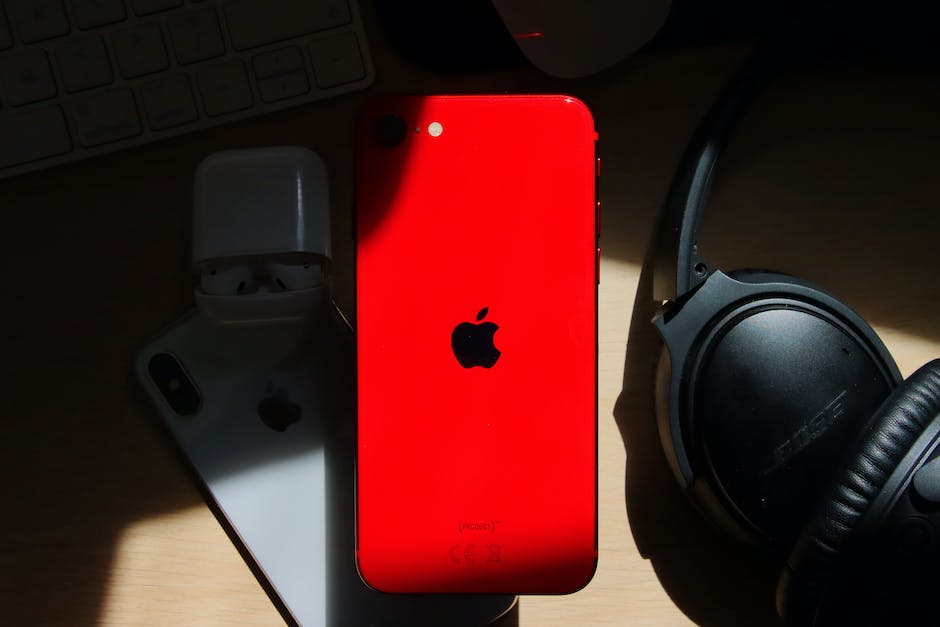To select ear pads and tips that maximize comfort and sound isolation, focus on high-quality, durable materials like memory foam with leather or protein leather for a snug fit. Properly fitting, plush ear tips create a secure seal that blocks external noise and improves sound quality. Choose materials that breathe and resist wear for long-lasting comfort. If you want to discover more about making the best choices for your headphones, there’s plenty more to explore.
Key Takeaways
- Choose high-quality, dense foam or memory foam pads with leather or protein leather for better comfort and passive noise isolation.
- Prioritize durable materials that resist wear and maintain sealing ability over time for long-lasting sound isolation.
- Opt for ear tips that create a secure, snug fit to enhance comfort and improve passive noise cancellation.
- Balance between breathability and sealing properties to prevent discomfort and sweating during extended use.
- Consider sound-absorbing layers and resilient materials to boost noise cancellation without sacrificing comfort.

Choosing the right ear pads and tips is vital for maximizing both comfort and sound isolation when using headphones or earbuds. The quality of your ear pads directly influences how well noise cancellation works and how comfortable you feel during extended use. When selecting ear pads, consider materials that not only provide a good seal to block out external noise but also maintain durability over time. For example, memory foam pads covered with high-quality leather or protein leather tend to offer excellent noise isolation because they conform to your ears, creating a snug fit that minimizes sound leakage. Durable materials are key, especially if you use your headphones daily or during physical activities, as they resist wear and tear better than cheaper alternatives. The longevity of your ear pads guarantees you don’t have to replace them frequently, saving you money and hassle in the long run.
Choosing durable, high-quality ear pads enhances comfort and noise isolation during extended listening sessions.
In terms of noise cancellation, the right material makes a noticeable difference. When your ear pads create a tight seal, they enhance passive noise cancellation, reducing ambient sounds so you can focus fully on your music, podcast, or calls. Foam-filled pads, especially those with a dense, firm construction, tend to absorb sound better than thinner or softer materials. This means less external noise seeps in and less sound escapes, which is vital if you’re in noisy environments like airports or busy offices. Additionally, some advanced ear pads incorporate sound-absorbing layers designed specifically to boost noise isolation, providing an extra layer of noise cancellation without relying solely on electronic noise-canceling tech. Proper ear pad materials also contribute to the durability and long-term performance of your headphones.
Comfort is also a major consideration. If the ear pads are made from breathable, skin-friendly materials, you’ll experience less sweating and discomfort during long listening sessions. Over time, softer, plush materials may flatten or degrade, so opting for pads with durable, resilient materials will keep your headphones feeling comfortable and effective for longer periods. When choosing ear tips for earbuds, look for silicone or memory foam options that create a secure fit without exerting too much pressure on your ears. A good fit not only improves sound quality but also enhances noise cancellation by sealing out external sounds. Remember, the more secure and comfortable your ear tips are, the better your overall listening experience, with less distraction and fatigue.
Ultimately, selecting ear pads and tips that balance noise cancellation and material durability guarantees a consistent, enjoyable experience. Well-chosen materials provide a long-lasting seal, which boosts passive noise cancellation and keeps your ears comfortable, even during extended use. Investing in high-quality, durable ear pads and tips means you’ll enjoy superior sound isolation and comfort, making your listening sessions more immersive and enjoyable every time.
Frequently Asked Questions
How Do Ear Pad Materials Affect Allergy Risks?
You might be at risk of allergies if you choose ear pad materials that aren’t hypoallergenic. Materials like foam or certain plastics can cause irritation, especially if you’re latex sensitive. To reduce allergy risks, opt for hypoallergenic materials such as silicone or specially treated fabrics. Always check for labels indicating hypoallergenic properties, and avoid latex if you have latex sensitivity. This helps ensure comfort and minimizes allergic reactions during use.
Can Ear Tips Improve Noise Cancellation Without Active Tech?
Yes, ear tips can improve noise cancellation without active tech by enhancing passive noise isolation and ear tip ergonomics. When you choose snug-fitting, well-designed ear tips, they block out more ambient sound, creating a better seal. This improves your listening experience by reducing external noise and increasing sound quality. Properly fitted ear tips, consequently, make a noticeable difference in noise reduction, allowing you to enjoy your music or calls with less distraction.
Are There Eco-Friendly Options for Ear Pads and Tips?
Yes, eco-friendly options for ear pads and tips are available. You can choose products made from sustainable materials like cork, bamboo, or recycled silicone. Biodegradable options, such as plant-based or compostable tips, help diminish environmental impact. By selecting these, you support sustainability efforts while enjoying comfort and sound isolation. Always check product labels for eco-friendly certifications to guarantee you’re making an environmentally conscious choice.
How Often Should I Replace Ear Pads and Tips?
You should replace your ear pads and tips at least once every six months, but if you wear them daily, consider doing so every three to four months. Neglecting this wear replacement schedule can turn your headphones into breeding grounds for bacteria and dirt, affecting hygiene considerations and sound quality. Regular replacement keeps your listening experience fresh, comfortable, and healthy, preventing buildup that can cause discomfort or even ear infections over time.
Do Custom Ear Tips Enhance Sound Quality Significantly?
Yes, custom ear tips can enhance sound quality considerably. They provide a custom fit that seals your ears better, which improves sound clarity and bass response. When your ear tips fit snugly, external noise is blocked out more effectively, allowing you to enjoy clearer audio. Plus, a comfortable, secure fit means you’ll likely wear them longer without discomfort, making your listening experience more immersive and satisfying.
Conclusion
Choosing the right ear pads and tips can transform your listening experience, making it more comfortable and isolating sound better. Remember, about 85% of noise is blocked when you find the perfect fit, so don’t settle for less. When your ear gear fits well, you’ll enjoy clearer sound and less fatigue. Take the time to select and adjust your ear pads—your ears will thank you, and your music will sound better than ever.















